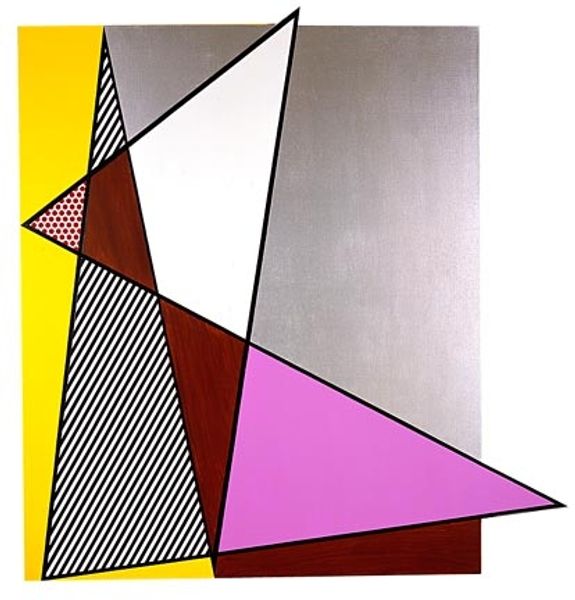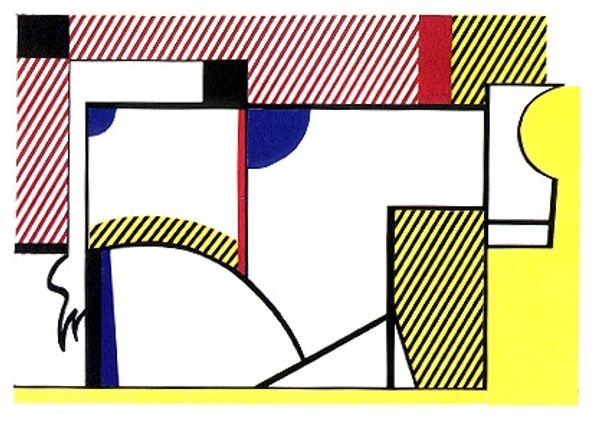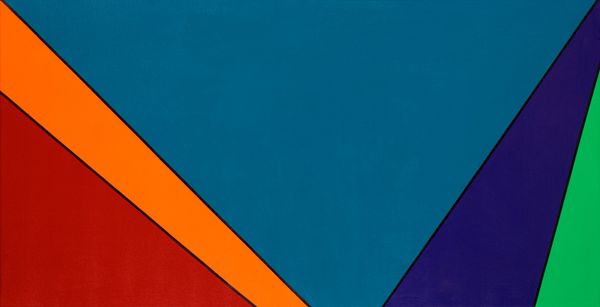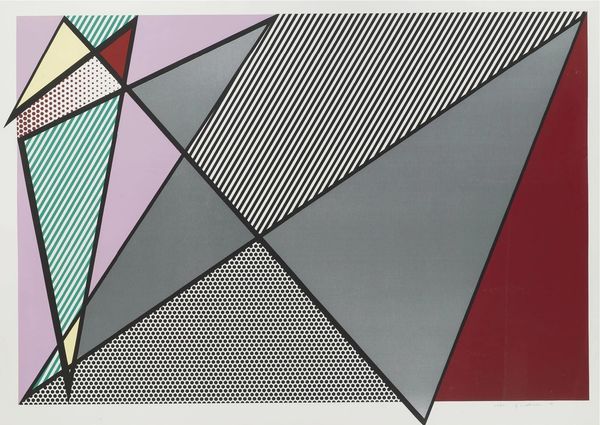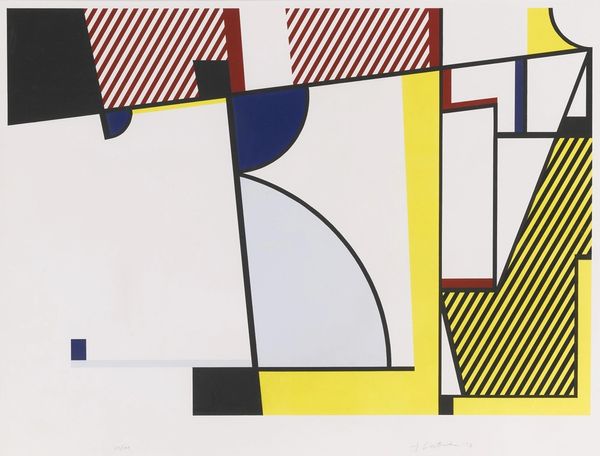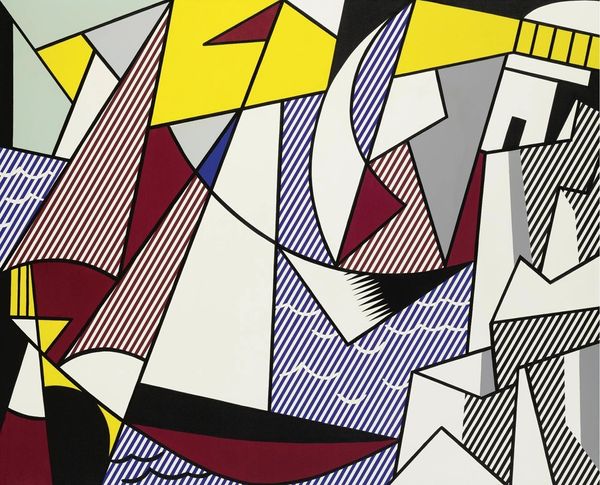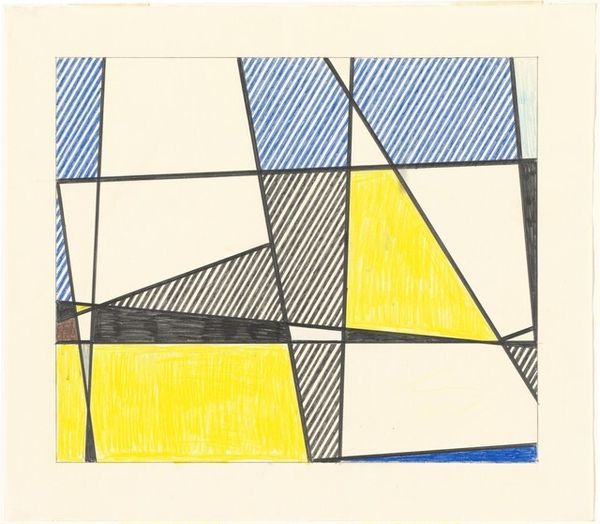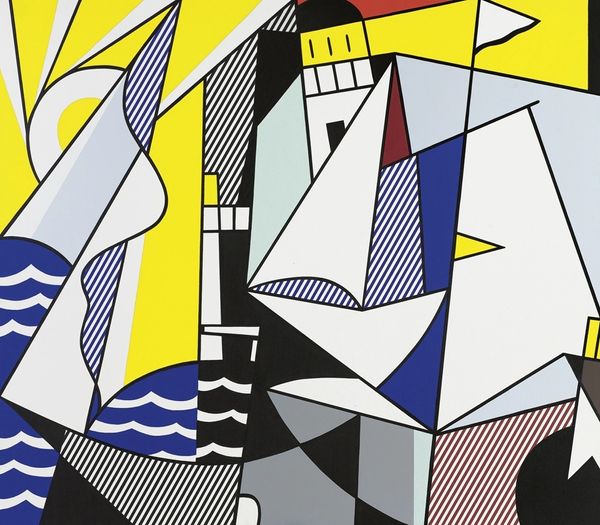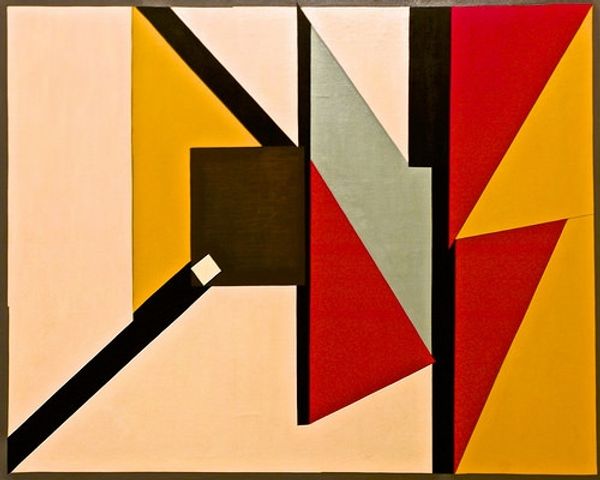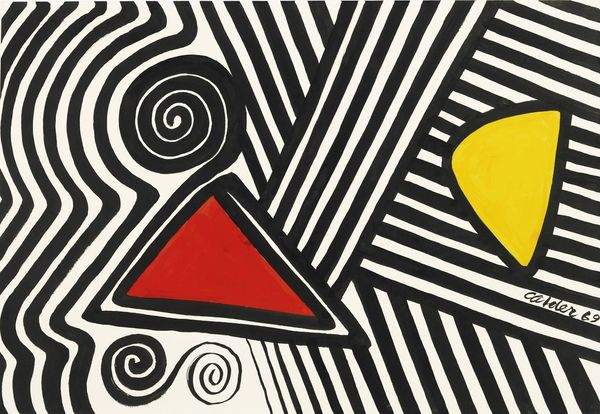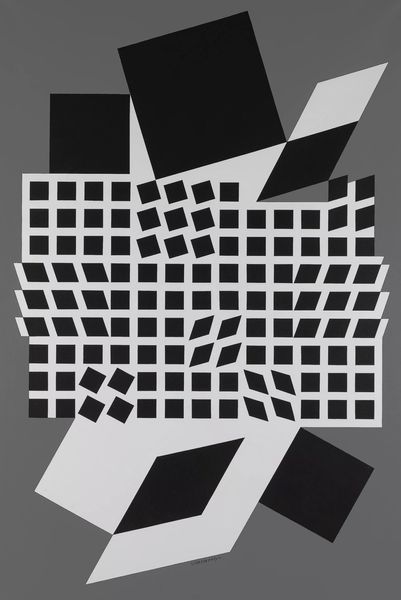
Dimensions: 274.3 x 426.7 cm
Copyright: Roy Lichtenstein,Fair Use
Curator: Oh, my, this piece feels incredibly… assertive. The sharp angles and bold, flat colors hit you immediately. Editor: Indeed. What you’re seeing is Roy Lichtenstein’s “Perfect Painting #1,” created in 1985 using acrylic paint. Lichtenstein, of course, is deeply embedded in the Pop Art movement. Curator: Right, that becomes immediately apparent, it's unmistakable! But what exactly is Lichtenstein trying to communicate? The term "perfect painting" reads as supremely ironic considering the seeming visual chaos. Editor: That's precisely what makes Lichtenstein so compelling. He challenges our preconceived notions of "high" art. We have to consider how, by appropriating the aesthetics of commercial printing—the Ben-Day dots, the flat colors—he disrupts the art world establishment. How it democratized imagery. It suggests the role that media representation had in our lives in the 80s, but perhaps it feels more relevant today. Curator: Absolutely, especially through a lens of race and class! The fact that these aesthetics are derived from mass media, historically controlled by powerful interests. It becomes more a subversive act that allows working-class iconography into privileged gallery spaces. But still… it is incredibly visually busy; is the lack of clear subject a rejection of traditional art narratives? Editor: I believe so. Lichtenstein engages with abstract art’s legacy, specifically geometric abstraction, which had very definite cultural implications through its use as interior decor for white bourgeois spaces. This is like, meta abstraction—abstracted abstraction! What does it mean to claim the space? Curator: Interesting. The boldness could also be interpreted as an act of defiance against art historical conventions… appropriating the high modernist styles of suprematism. Lichtenstein seemed like he was actively reinterpreting and even satirizing male-dominated movements through a Pop Art filter. Editor: Precisely. It becomes clear through his engagement that Pop Art served a powerful critique of these artistic legacies. This reinterpretation opens a space for conversations on art, culture, and society. I think a key piece here, perhaps the defining piece, is not merely the work's immediate impact, but the ripples of conversation and discourse it creates. Curator: Very true, viewing “Perfect Painting #1” has certainly nudged me to re-examine the familiar framework, in the sense of our culture in this case, art for the people, or against the people. Editor: Exactly, I agree. Its placement into society changed things. Lichtenstein makes you confront uncomfortable yet relevant aspects.
Comments
No comments
Be the first to comment and join the conversation on the ultimate creative platform.
